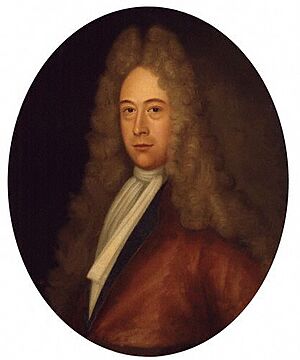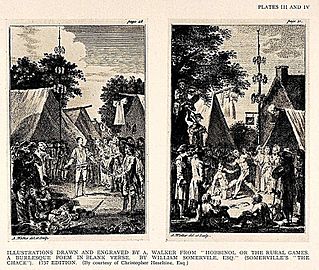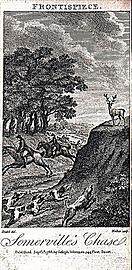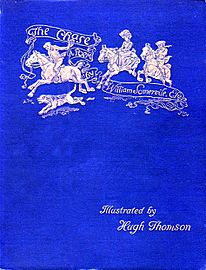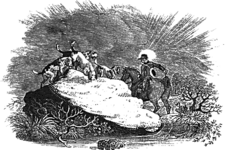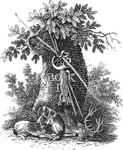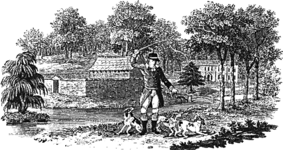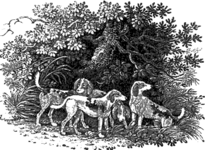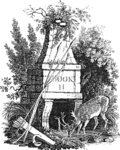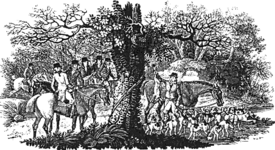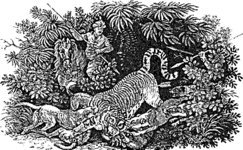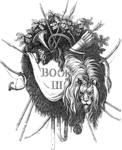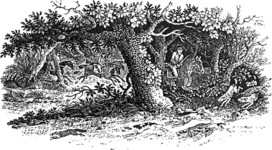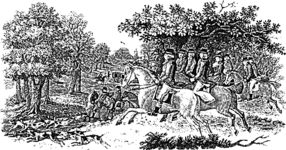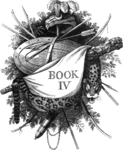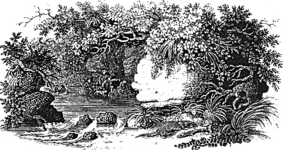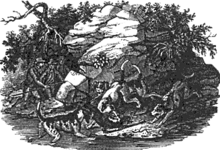William Somervile facts for kids
William Somervile (born September 2, 1675 – died July 17, 1742) was an English poet. He wrote different kinds of poems. He is best known for his poem "The Chace." In this work, he helped start a new style of English poetry called a georgic, which is a poem about country life or farming.
Contents
About William Somervile
William Somervile was born in Staffordshire in 1675. He came from a well-known country family. His family home was called Edstone, near Wootton Wawen in Warwickshire.
He went to school at Winchester College and then to New College, Oxford. After that, he studied law. When his father passed away in 1705, William lived on his family estate. He spent his time enjoying field sports, which are outdoor activities like hunting. These sports later became the main topics of his most famous poems.
William had many friends who were also poets, like William Shenstone and Richard Jago. He also wrote letters and exchanged poems with Allan Ramsay. William enjoyed having guests and being friendly, but this often cost him a lot of money. He faced financial challenges because of his generous lifestyle.
After William Somervile died in 1742, he was buried in the church at Wootton Wawen. His estate went to James Lord Somerville. This happened because James had lent William money to help him with his debts.
William Somervile's Poems
William Somervile published several collections of poems. His first major work was The Two Springs (1725), which was a fable. A fable is a short story, often with animals, that teaches a lesson. He also published Occasional Poems in 1727.
His most famous poem, The Chace (also spelled "The Chase"), came out in 1735. In 1740, he published Hobbinol, or the Rural Games. This was a funny poem that described the Cotswold Games, which were like old-fashioned country sports. His last poem was Field Sports (1742), which was about hawking, a sport using trained birds.
His poems, especially The Chace, were popular for many years after he wrote them. People generally liked his writing style. A famous writer named Samuel Johnson once said that Somervile "writes very well for a gentleman." This meant his writing was good, even if it wasn't seen as groundbreaking.
Another writer, John Aikin, said that Somervile was mainly a "descriptive poet." This means he was very good at describing things in his poems. Aikin thought Somervile's poems showed a good sense of rhythm and sound. He believed The Chace was probably the best poem written about hunting in any country.
Fables and Their Meanings
Somervile also wrote many fables. While some of his fables were simple, others had deeper meanings. He often took old stories and changed them to talk about things happening in his own time.
For example, he wrote a fable about the lion, the boar and the vultures. He changed the story to be about bear-baiting, a sport where dogs fought bears. In his version, the dog and bear realize they are being used in a way that hurts them.
Another fable, The Trumpeter Taken Captive, was set during a time when England and France were rivals. This story was against people who started wars for their own gain without fighting themselves. These fables showed Somervile's thoughts on important issues of his day.
The Chace: A Famous Georgic
The Chace is the poem Somervile is most remembered for. It was one of the first georgic poems in English that focused on an English topic. A georgic poem is a type of poem that describes country life, farming, or outdoor activities. Before The Chace, there were Cyder (1708) by John Philips and Rural Sports (1713) by John Gay.
The Chace has four main parts, called cantos:
- The first part introduces the idea of hunting and how to manage hunting dogs.
- The second part describes hunting hares.
- The third part focuses on fox hunting.
- The fourth part talks about otter hunting and how to breed and care for hunting dogs.
The Chace was printed many times. Later editions sometimes included his other poems about country activities. Many artists have created pictures for the poem, including Thomas Bewick, Thomas Stothard, John Scott, and Hugh Thomson.
Images for kids
-
1786 engraved frontispiece after Daniel Dodd for The Chase
-
Hugh Thomson's cover vignette for the 1896 illustrated edition of The Chase
- Images from The Chase by John & Thomas Bewick, 1802


